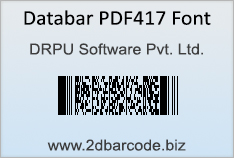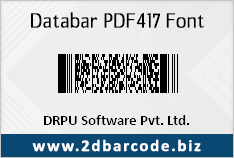

Databar PDF417 is a 2d barcode used in different applications including primarily transport, identification cards, and inventory management. PDF stands for Portable Data File and was developed by Symbol Technologies. PDF417 uses built-in error correction to ensure better readability.
The PDF417 symbology is mainly used in Europe and in the United States. Databar PDF-417 is useful for encoding large amounts of data, usually up to one or two-hundred characters are encoded in a single symbol.The 2D barcode symbology is mostly used in the areas of logistic applications (especially in the automotive industry), transport systems, identification (like driver licenses, passports) and document management.
PDF417 is a 2D barcode symbology (two-dimensional barcode) with very high data density. A single PDF417 symbol can be imagined as multiple linear bar-codes (called "rows") stacked above each other. This is the reason why the PDF417 symbology is sometimes called a "stacked linear symbology". The overall shape of a PDF417 is rectangular. The size of the symbol can be modified by the user. The ratio of the widths of the bars (or spaces) to each other encode the information in a PDF417 symbol. For that reason the printing accuracy and a suitable printer resolution are important for high quality PDF417 symbols. PDF417 is also known under the names PDF-417, Portable Data File and PDF 417. Macro PDF (or Macro PDF417) is used when concatenating multiple PDF417 barcode symbols. PDF417 symbols can link to other symbols which are scanned in sequence allowing even more data to be stored.
When the PDF417 symbol is created, from 2 to 512 error detection and correction codewords are added. PDF417 uses Reed–Solomon error correction. When the symbol is scanned, the maximum number of corrections that can be made is equal to the number of codewords added, but the standard recommends that two codewords be held back to ensure reliability of the corrected information.
2D Barcode Fonts
